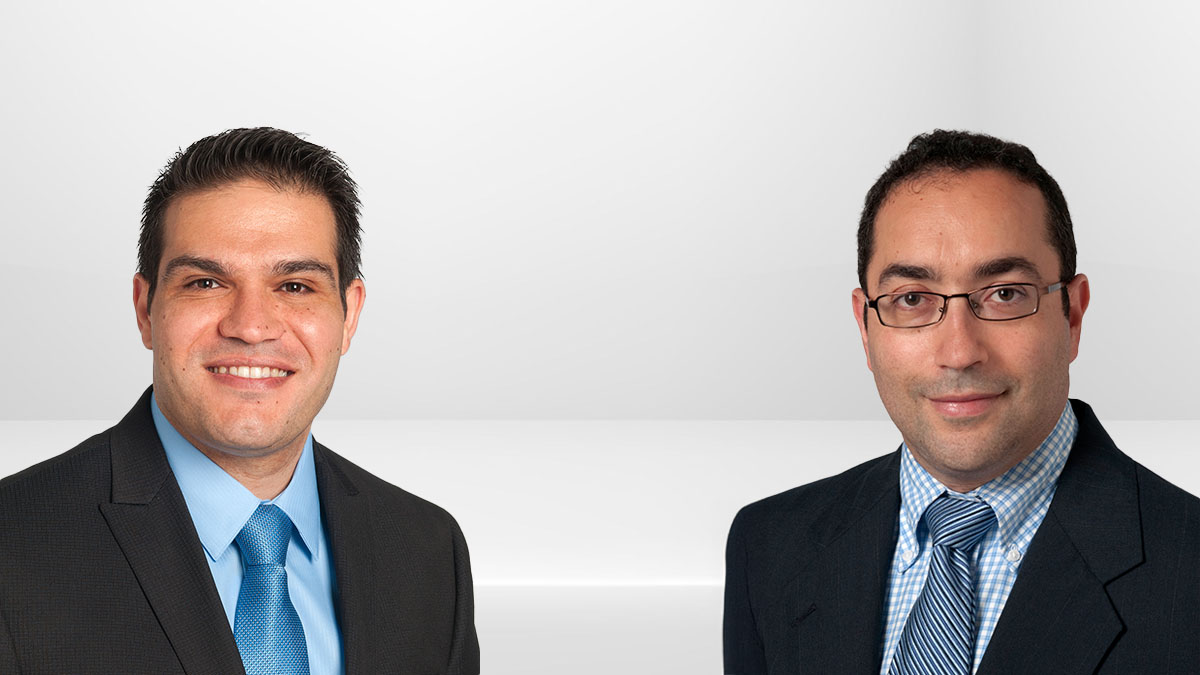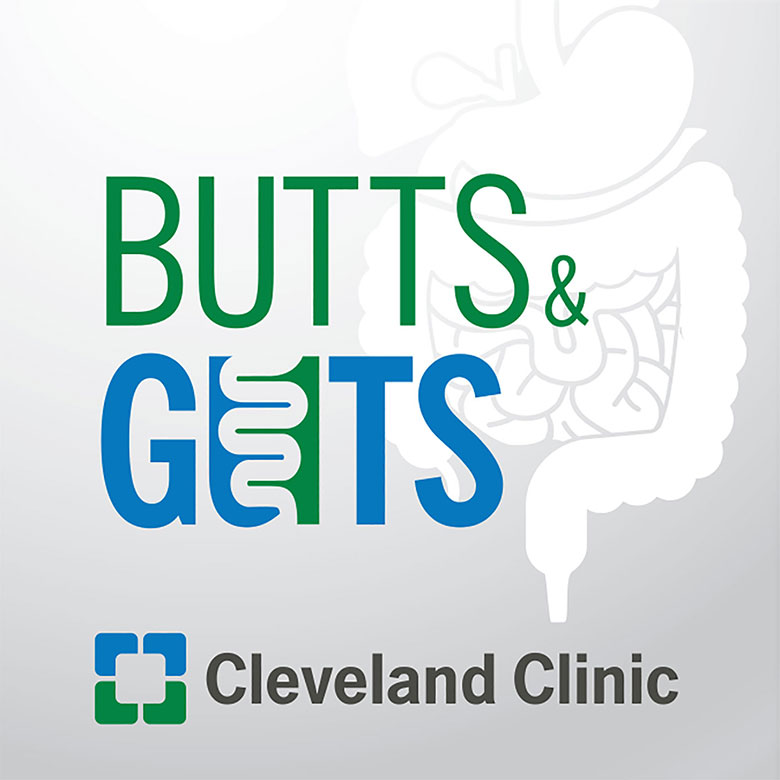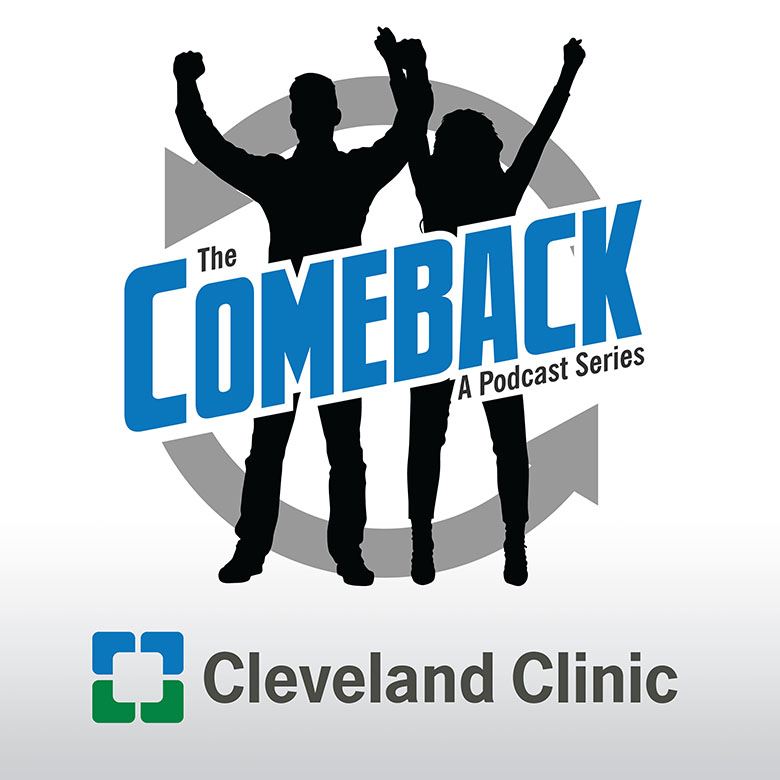AFib After an Ablation: What to Know

Experiencing persistent or recurring atrial fibrillation (AFib) can be frustrating, especially when it happens after an ablation procedure. Oussama Wazni, MD, MBA, and Ayman Hussein, MD, discuss treatment options like medications, re-do ablations and the Convergent procedure.
Schedule an appointment at Cleveland Clinic by calling 844.868.4339.
Learn more about Arrhythmia care at Cleveland Clinic.
Subscribe: Apple Podcasts | Podcast Addict | Buzzsprout | Spotify
AFib After an Ablation: What to Know
Podcast Transcript
Announcer:
Welcome to Love Your Heart, brought to you by Cleveland Clinic's Sydell and Arnold Miller Family Heart, Vascular and Thoracic Institute. This podcast will explore disease prevention, testing, medical and surgical treatments, new innovations and more. Enjoy.
Oussama Wazni, MD:
I'm Oussama Wazni. I'm the Section Head of Electrophysiology here at Cleveland Clinic. Thank you for joining us again for another podcast regarding heart rhythm issues. Today with me is Dr. Ayman Hussein. He's our Director of Research at Cleveland Clinic, and he is also an expert in redo ablations for atrial fibrillation.
So, Dr. Hussein, tell us, when does a patient need a redo ablation or when should a patient approach a redo ablation? They just had one and then now they're thinking of another one. What are the indications for another ablation?
Ayman Hussein, MD:
Generally speaking, atrial fibrillation or atrial flutter can sometimes recur after an ablation procedure. Typically, the first three months after an ablation is a period we call the blanking period. That's a time period where arrhythmias may not necessarily count as failure, and it might be the time that the heart needs to recover from the ablation and for the inflammation to cool down.
For arrhythmias that persist beyond the three-month period, we typically offer redo ablation. That is preferred over medications in terms of maintaining rhythm and controlling good rhythm in the long term.
Oussama Wazni, MD:
This is a very important point that in the first two to three months after an ablation, patients may still have some atrial fibrillation or atrial flutter. It doesn't mean that the ablation did not work. It just could mean that the lesions are still maturing. Whatever we ablated still needs to take effect. Or sometimes patients will actually sometimes have more AFib because of inflammation and irritation. But now they're beyond the three months and they could recur in two ways, correct? They can have atrial fibrillation or flutter, which they started off with, but they could develop a new problem, an atrial flutter that they did not have before. Can we talk a little bit about why some patients come back with AFib and why some patients have recurrence with atrial flutter?
Ayman Hussein, MD:
Sometimes the pulmonary veins, which are the main target for AFib ablation, which are the veins on the left side of the heart, can electrically reconnect after the procedure. That could predispose to atrial fibrillation.
Sometimes there might be some other areas that could reconnect at the back wall, or sometimes the veins, and that can trigger a flutter, which is a more organized circuit that involves entrance to the vein and exit outside the vein. It's mainly the reconnections after these ablation procedures.
Sometimes, if patients have scars in other areas of the heart, in other areas of the top chamber, flutters could develop around the valve on the left side of the heart, or sometimes on the right side of the heart. There are various reasons and mechanisms for flutters to develop, but yes, sometimes we see flutters after ablation that did not exist before ablation. The good news is that flutters are easier to target because it's a fixed short circuit that we go after, whereas AFib can still remain challenging, but ablation would still be preferred.
Oussama Wazni, MD:
There are two kinds of patients that we want to talk about now. We are going to talk about the simple and easy paroxysmal atrial fibrillation that occurs, versus for example, somebody who had persistent, meaning that the AFib persists for more than seven days or long-standing persistent, the patient who's had AFib for more than a year.
Let's talk separately now about the redo, for example, in somebody who has paroxysmal AFib, that means that the AFib comes and goes on its own. They had an ablation, but now within six to eight weeks, they started having recurrence, or it came back and it kept coming back even after three months. What is the approach for that patient?
Ayman Hussein, MD:
Redo ablation is preferred over medications because most of the time the touch-up ablation or the second redo ablation involves less work if it's for paroxysmal and first time. Most of the time, we have some reconnection of those veins. When we do the ablation, we go and remap the chamber and determine the sites of reconnection, and go after those. Most of the time, we include the back wall in our practice. It's an ablation that involves the veins on the left side and the back wall. We try to be more conservative with the paroxysmal patients. We do not necessarily extend far and beyond those main targeted areas.
Oussama Wazni, MD:
Now, in the persistent patients, sometimes they need a little bit more, but again, it's still the same. We go in, we check around the veins, and if there are any reconnections, we touch up those areas and ablate them. We may extend the area of ablation, but suppose now we have a patient who's had two ablations and they still have atrial fibrillation. Now this time we go in, and the veins are very well isolated. So, whatever has been done was actually very well done and it is durable and it persists, but the patient's still having a lot of AFib. Now what do we do?
Ayman Hussein, MD:
It's a common scenario in our practice for ablations that we have done here that we go back and all the areas that were done from the first time were very well done, and there were not many reconnections across the veins on the back wall. First of all, we can still extend around the main areas that we ablated before, such as going broader around those initial areas. Sometimes we run medications to try to see if we can trigger arrhythmias from other areas, such as focal misfiring from the right or the left side of the heart. If we detect certain things like that, we will go after them. Sometimes we target the vein that drains the upper part of the body to the right top chamber, which we call the SVC (superior vena cava). If it was not targeted the first time, this is an area that we target.
But we have also done some work in terms of mapping the substrate beyond those standard areas. There were a lot of studies over the years investigating what else could be done beyond the veins and the back wall, with controversial findings for the most part. But recently we were involved in a clinical trial that was our own, an algorithm that maps certain areas with abnormal signals both in the right and the left upper chamber, and we go after them. We are still in follow-up for that, but we've seen a lot of encouraging results.
In some patients after we fail everything, especially if we do two ablations, we go after targets beyond the pulmonary veins. Sometimes we send them for a surgical intervention called the hybrid procedure or a convergent procedure.
For convergent procedures, it's a procedure that involves going from just below the chest bone and going to the outside surface of the heart that is done by one of our surgical colleagues to target the areas at the back wall from the outside. The thought is that some of the ablation from inside may have not gone deep enough and that's why the surgeon can address it from the outside. At the same time, the surgeon can add some ablation at the roof of the chamber from the outside. There's a small area called the left atrial appendage that the surgeon can close from the outside by putting a clip on it. That has been shown to be beneficial in many scenarios in terms of reducing the risk of stroke. It's a complex question to address, but this would be the quick summary about the options.
Oussama Wazni, MD:
I'm going to try to summarize it a little bit. Dr. Hussein has been intimately involved in the research on what to do once the usual targets are ablated or well-ablated. The usual targets are what we call the pulmonary veins. Those are the veins that drain the lungs into the left atrium. That's our usual target, and maybe the superior vena cava. Those are the usual targets. But beyond the usual targets, really all bets are off. We don't know what to do empirically. That's what's called an empiric ablation, meaning we do it in most patients or all the patients because we know that most of the triggers for AFib come from there.
But after that, we really don't have any guidance. That's where we're working on this new research and new technology to guide us to where to ablate beyond those pulmonary veins. Dr. Hussein has been doing this work now for many years. It looks like the initial results are very promising. When somebody who continues to have AFib and the doctor says, ‘Well, there's nothing much more to do,’ hopefully very soon we will be able to have a solution for that with mapping. This is part of what we've been doing. There are other companies out there that have different algorithms and we will be testing them also at Cleveland Clinic.
Finally, regarding the surgery, somebody may ask, "Well, why do you need surgery?" A limitation of everything we do from the inside is that some areas in the heart or in the atrium are very, very thick. We can't have a full thickness ablation. We have to think about the heart in the three dimensions, meaning yes, there is a width, there is height, but also there's thickness. That thickness is sometimes what gets it into trouble if we have atrial flutter or does not allow us to have good success. That's why sometimes ablating from the outside after we had ablated from the inside, we can get the full thickness of the tissue. That's where our surgeons can be very helpful in actually managing this problem.
Another subset of patients who would benefit from this hybrid approach are patients who have hypertrophic cardiomyopathy. Hypertrophy means that they have extra thickening or the thickness of the wall of the heart is very thick. You can imagine that then we have even more trouble with those. That's when we would, also after failed ablations, refer them to our surgeons.
Finally, the clip part of the appendage, because the surgeon is going to be there and they have indications right now, they can close it. Some of the triggers of AFib come from the appendage, so that's why that could be helpful. But another added advantage is that they would be protected from stroke if they need to stop their anticoagulation.
So that's it in summary. They're still coming on. I think here at Cleveland Clinic, we probably have the largest experience with redo ablations. Actually, we call ourselves the ‘Redo Kings’ because we do take tough cases. When ablations fail elsewhere, we have very good success.
But also we have to be realistic. Sometimes, despite our best efforts and using all the technology, there are a small subset of patients that will continue to have atrial fibrillation despite our best efforts. Who are those? Those are the ones who've been in AFib for a long, long time. A patient who's been in AFib for five years, it's going to be difficult to get them back into normal rhythm. That's why I encourage our patients to actually seek help sooner rather than later. We've also been pioneers in this, Dr. Hussein and I, in actually driving the fact that the sooner AFib is ablated, the better success we have in the procedure itself and also the better the outcomes for the patient overall.
So have a discussion with your doctor. ‘Are you sure we can leave this alone? Are you sure that this will not have untoward effects in the future? Are you sure you don't want to send me to somebody to get an ablation sooner than later?’ Because really, once it gets beyond one or two years, it's very hard to overcome the changes that already happened in the atrium and to get full success.
Ayman Hussein, MD:
AFib by itself is a progressive disease, and it can remodel in a way to sustain itself over time. We've shown in many of our research and papers that the longer you wait, the worse the outcomes. Instead of treating with medications for a prolonged period of time and thinking of medications as a band-aid solution, an ablation is a more definitive shot at the source of the problem. That's why we've seen again and again, the benefits of early ablation to control AFib. Actually, there were research findings showing that even if it recurs, the likelihood of progression to the more persistent form or to the more progressive forms down the road would be less in patients who had ablation versus those who were treated with medications initially.
Oussama Wazni, MD:
All right, well, thank you so much for this podcast. I hope this has been helpful, and we'll see you in another podcast. Thank you.
Announcer:
Thank you for listening to Love Your Heart. We hope you enjoyed the podcast. For more information or to schedule an appointment at Cleveland Clinic, please call 844.868.4339. That's 844.868.4339. We welcome your comments and feedback. Please contact us at heart@ccf.org.
Like what you heard? Subscribe wherever you get your podcasts or listen at clevelandclinic.org/loveyourheartpodcast.

Love Your Heart
A Cleveland Clinic podcast to help you learn more about heart and vascular disease and conditions affecting your chest. We explore prevention, diagnostic tests, medical and surgical treatments, new innovations and more.


